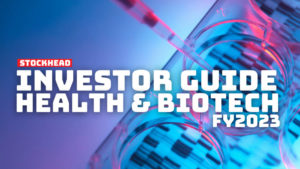New research indicates Imagion Biosystems’ (ASX: IBX) imaging particles could bring down Tesla — in MRIs that is, not the car brand.
A University of Sydney study shows Imagion’s iron oxide nanoparticles enable low-field magnetic resonance imaging (MRI) that is powered at a lower Tesla (T) which is a measurement of magnetic flux density.
This may allow the company to offer medical imaging for considerably cheaper rates than available today.
You don’t really need 7T
MRIs over the years have been getting bigger and more powerful with some machines now using magnetic fields of 7T. Normal clinical MRIs are 1.5T or 3T.
This level of high-field imaging is faster and can pick up more details, but at a cost of about $1m/T, it’s also very expensive. The issue to date with low-field imaging has been their inability to deliver high-contrast images without compromising sensitivity.
But prototype MRIs that operate at or under 0.3T are being built which, the Sydney researchers say, “are uniquely positioned to reduce the cost and expand the clinical accessibility of MRI”.
US-based CEO Bob Proulx said the paper showed the Imagion particles work at 6.5mT, or 6.5 milli-Tesla which “according to Wikipedia is about the strength of a refrigerator magnet”.
“That is why the work just published refers to Ultra-Low Field MRI (ULF MRI), because it is at a magnetic field well below current clinical standards,” he told Stockhead.
“The magnets needed for these ULF MRI systems are both less expensive and weigh a lot less which is what make them attractive for a variety of new clinical settings.”
Lead author Dr David Waddington, and colleagues from the University of Sydney, are investigating different nanoparticles as contrast agents for MRIs, and Imagion is providing in-kind support.
Imagion says its nanoparticles — a key element of its proposed imaging device — can provide better contrast in an ultra-low-field MRI than existing agents such as gadolinium, which it says has also come under fire recently for causing neuro- and nephro- (kidney) toxicity.
Prepping for phase 1
Imagion is preparing for a phase one multi-site study in Australia in the December quarter this year of its MagSense test on HER2 metastatic breast cancer. The test aims to eliminate unnecessary surgeries and associated morbidity that results from the current standard of care for biopsy procedures.
Proulx said they’d switched the trial site to Australia after finding a work-around that meant they didn’t need to build and ship multiple versions of their medical device here, and to take advantage of Australia’s more streamlined trial system over those in the US.
The powerful US Food and Drug Administration gave the company breakthrough device designation early last year, which means it can get a priority review and potentially hasten its path to market.
To get this designation the FDA says products must “provide for more effective treatment or diagnosis of life-threatening or irreversibly debilitating human disease or conditions”.
If Imagion’s study proves its device can identify breast cancer tumours without a biopsy, the company plans to move on to other cancers, such as difficult to diagnose ovarian cancer.
In other ASX health news:
Adelaide mini-Xray machine maker Micro-X (ASX:MX1) said it built and shipped $2.1m worth of Rovers in the June quarter and was paid $1.7m, they’re past the backlog and back on their under-four-week delivery schedule, and halfway through July has already secured $200,000 worth of orders.
Diarrhoea company Immuron (ASX:IMC) is raising $US20m from institutional investors which it will use to fund R&D, preclinical and clinical programs, and marketing for its Delhi-belly pill Travelan.
HSC Technology Group (ASX:HSC) will offer G Medical Innovations’ (ASX:GMV) diagnostics infrastructure and remote patient monitoring options in Australia and New Zealand, adding to a deal signed in April.
You might be interested in












